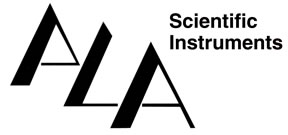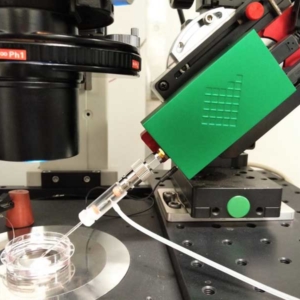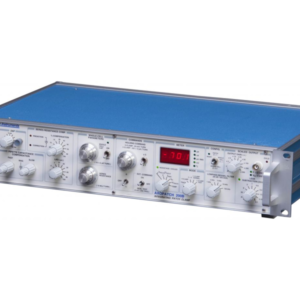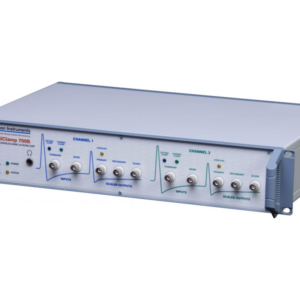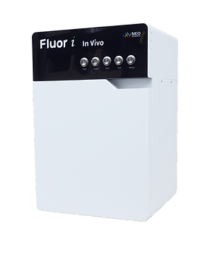Overview
The dPatch® Digital Patch Amplifier System combines an unmatched sampling rate of up to 5 MHz with noise performance that supports the quietest single-channel recordings and digital architecture for the highest signal fidelity and ultra- stable compensation circuitry. The dPatch represents the most advanced amplifier for electrophysiology on the market today. The IPA® family of Integrated Patch Amplifiers, enables efficient, low-noise whole-cell recordings. The IPA system, available with one (IPA) or two recording channels (Double IPA), combines state-of-the-art amplifier technology with fully integrated D/A and A/D conversion and a high speed USB interface. Acquisition, data management, and streamlined analysis are performed using the bundled SutterPatch® Data Acquisition and Analysis Software, built on the foundation of Igor Pro 8 (WaveMetrics, Inc.). All Sutter Amplifier Systems were designed with the attention to detail our customers expect and appreciate. The faceplates are sculpted and feature recessed connectors. The pipette holder connects to machined aluminum threads designed for the utmost in mechanical stability and improved shielding. Available accessories include expansion panels,which present amplifier back panel connections at the front of a 19” rack; a machined brass ground point; standard pipette holders made of
polycarbonate; premium pipette holders made of quartz, which minimizes
thermal expansion (now standard on dPatch Systems).
Last Updated on October 21, 2024
dPatch

The dPatch® amplifier system was built around a simple idea: What if we built a clean-sheet design that used the latest technology to make the next generation of patch clamp amplifiers? We hired the best hardware and software designers available in the industry, the same engineers who created the leading amplifiers already in the market. We asked them to design the best amplifier system possible, using the very latest in digital architecture, and pair it with a contemporary, easy-to-use, yet powerful software platform.
The resulting design represents a complete rethinking of how to best reduce noise and preserve signal to get the cleanest recordings possible, at a bandwidth that far exceeds anything else on the market. The dPatch amplifier system’s digital architecture uses state-of-the-art methods in signal processing, such as field-programmable gate arrays (FPGAs) and Arm Core processors – technologies unavailable when the leading amplifiers in the market were designed well over 20 years ago. The processing power of this design FINALLY enables fully integrated dynamic clamp, as well as digital capacitance and resistance compensation. The included SutterPatch® Software facilitates data acquisition, mangement and analysis with an intuitive and easy to learn interface.
Available in either a single- or dual-headstage configuration, the dPatch amplifier system’s architecture makes swapping headstages, or adding a second one to a single-headstage unit, a plug-and-play operation. The two headstages are independently configurable for either voltage clamp or FastFollower™ current clamp.
5 MHz SAMPLING RATE, UP TO 22-BIT RESOLUTION
One unique feature with dPatch is the headstage data sampling system. Each headstage is continually sampled at 5 MHz. Output filtering has thirteen settings between 100 Hz and 1 MHz. A resolution of 18 bits is achieved at 1 MHz. For lower filter settings, automatic downsampling increases resolution while optimizing data rates. At a bandwidth setting of 1 kHz, the dPatch system provides a signal resolution of better than 22 bits.
NO ACTIVE COOLING REQUIRED
Active cooling causes numerous problems that actually create more “noise” in the long run. Active cooling in amplifier headstages use Peltier cells, which cool the electronics for slightly better performance, but generate considerable heat on the opposite side of the cell. The heat generated causes thermal drift which makes it almost impossible to stay patched while doing single-channel work. This is THE MOST COMMON source of what users perceive as “manipulator drift”. As a company that makes micromanipulators, we are highly sensitive to the performance of the system within a complete electrophysiology rig.
Active cooling can help get a slightly better noise specification on paper, but in the real world the disadvantages far outweigh the slight gain in specsmanship. One of the development goals of the dPatch headstage was achieving a comparable noise performance at room temperature, without the need for a cooled headstage. In the two resistive feedback modes, the dPatch amplifier is even quieter than any of the competitor systems. In addition, the limited life expectancy of Peltier elements causes reliability concerns that we found unacceptable.
BUILT-IN DATA ACQUISITION SYSTEM MEANS NO THIRD-PARTY COMPUTER INTERFACE
Using a multiplexer-free design, the dPatch provides 8 fully differential analog input channels, 4 analog output channels, and 16 digital outputs (TTL). All I/O channels are sampled continuously (200 kHz for analog inputs, 250 kHz for analog and digital outputs) and available through the user interface.
SUTTERPATCH SOFTWARE
The dPatch amplifier system, in combination with SutterPatch software, has been engineered to automatically capture and store all amplifier settings, stimulus information and external experiment parameters, and associate them in time with the raw data traces. This includes all amplifier and acquisition settings, as well as timing and progress of the experiment. Fully integrated computer control of the amplifier stages means that the acquisition software is aware of the internal state of the amplifier and digitizer at all times and can track any changes that may occur. This is independent of whether a change is triggered automatically or initiated by the user.
●NEW FEATURE● DYNAMIC CLAMP
The patented digital architecture of the dPatch amplifier system provides an ideal platform for dynamic clamp. The dPatch is powered by a system-on-chip which provides parallel processing across a Field Programmable Gate Array (FPGA) and two high-speed ARM core processors. Several sophisticated dynamic clamp models are implemented within this architecture. In each model, the update of the applied current values occurs without communication between the dPatch and a computer. Depending upon the complexity of the model, update rates of up to 500 kHz can be achieved. (read more on the SutterPatch Software page)
TRACKING OF OTHER EXTERNAL DATA
In addition to status changes in connected hardware that are automatically tracked, the researcher can manually trigger tags to document events like stimulus application using instruments not connected to the amplifier. Information about environmental parameters and a more detailed specification of sample properties can be recorded and stored with the raw data. A total of over 650 metadata attributes are supported. Examples include: animal species, genotype, date/time when a cell sample was prepared, recording solutions, pipette resistance, hardware properties, and detailed information about stimuli applied.
DATA VISUALIZATION AND ANALYSIS
SutterPatch software has been designed to simplify the navigation and analysis of complex datasets. The scope window supports multiple view modes in both two-dimensional and an innovative three-dimensional display. The 3D view is particularly useful during assay development. Built on top of the latest version of the proven Igor Pro platform, SutterPatch combines native Igor Pro functionality with a wealth of features that are tailored to electrophysiology applications. Both the newcomer and the experienced user of patch clamp programs will feel comfortable using SutterPatch software.
Application modules provide focused functionality for particular applications.
Currently available:
- Event Detection Module: A deconvolution algorithm that excels at detecting miniature synaptic events even on a noisy background.
- Action Potential Analysis Module: Phase plane plot, timing and waveform statistics.
- Camera Module: An easy way to document the identity and condition of the recorded cell.
A LABORATORY WORKHORSE
While the dPatch System is ready for cutting-edge research, its feature set makes it immediately valuable in any lab setting.
- Three headstage feedback ranges for optimal whole-cell and single-channel recording
- Automated compensation of electrode and whole-cell capacitance
- Series resistance compensation
- Simple cabling, quick and easy set-up
- High dynamic range of digitizer means no need for variable gain stages
- High speed of digitizer means no concern about sample rate
COMMON APPLICATIONS:
- Single-channel recordings
- Auditory research and other rapidly changing signals
- Tissue slice recordings
- Cultured cell experiments
- Cell line studies from adherent or dispersed cells
- Optogenetics
- Nanopore and nanogap research
FEATURES
- Fully integrated single- or dual-headstage patch clamp amplifier and data acquisition system ensures quick and easy setup
- Optimized for single-channel and whole-cell patch clamp recordings in tissue slices, adherent or dissociated cells
- Full computer control provides automated compensation of electrode and whole cell capacitance
- Voltage clamp, FastFollower™ current clamp and fully integrated dynamic clamp capability for complete characterization of cells’ electrical activity
- Line frequency reduction in SutterPatch
- Software lock-in amplifier in SutterPatch for high-resolution capacitance measurements
- High bandwidth enables characterization of the fastest signals
- Three headstage feedback ranges for single-channel and whole-cell patch clamp recordings
- Comprehensive digital compensation circuitry provides the utmost precision and signal fidelity
- Bundled SutterPatch® software provides versatile data management, intuitive navigation and streamlined data analysis.
ACCESSORIES
Ground Point
The Ground Point GP-17 provides reliable, low resistance connections for a star ground configuration, the proven method to avoid ground loops in any electrophysiology setup. Accepts 9 banana plugs + 8 bare wires up to 10 gauge or banana plugs. The baseplate mounts directly on imperial or metric air table tops with the included ¼-20 and M6 screws. Made of solid, machined brass with plated banana/clamp connectors.
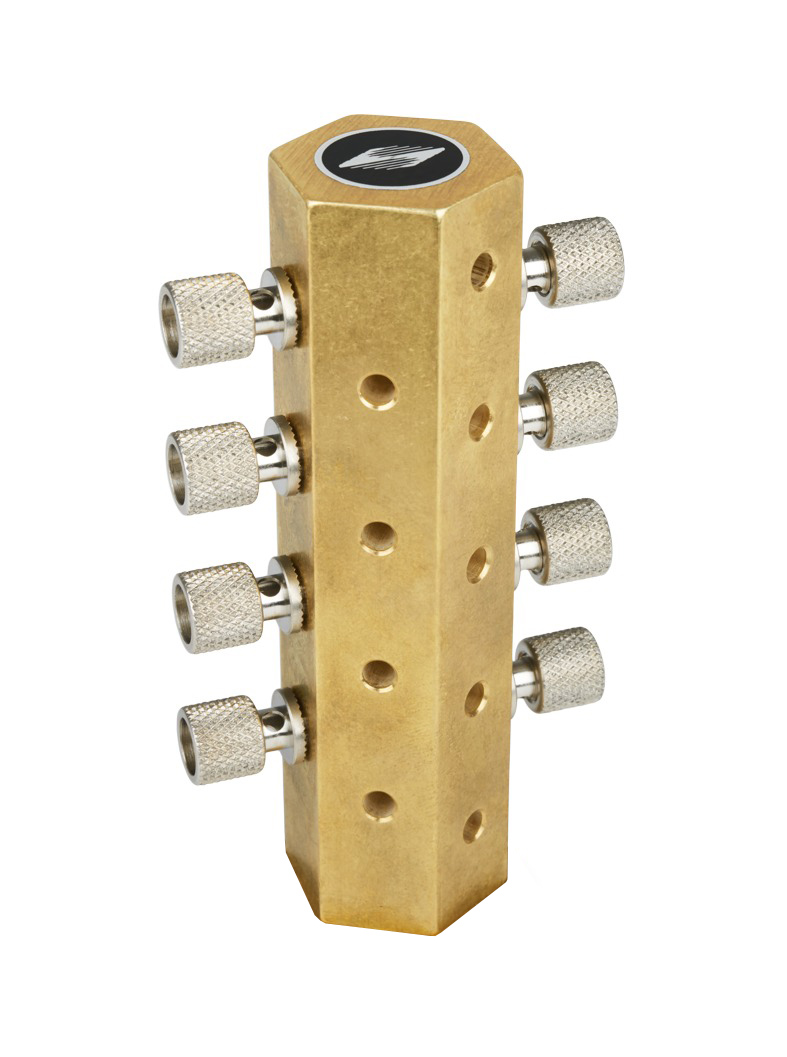
dPatch Expansion Panel

The dPatch Integrated Digital Patch Clamp Amplifier is a computer-controlled single- or dual-headstage system optimized for both single-channel and whole-cell recording applications.

back panel of dPatch. (Click for larger view)
Amplifier
-
- Hardware architecture enables all data conversion to be performed near the preparation, well away from known noise sources, such as power supplies and high-speed digital circuitry.
- Voltage clamp and true current clamp modes with smart switching between modes to avoid current artifacts
- Three choices of headstage feedback elements to optimize both single-channel and whole-cell recording
Feedback
Element |
Range |
Analog
Bandwidth |
Noise
10 kHz BW |
Pipette
Compensation
Range |
Series
Resistance
Range |
Cell
Capacitance
Range |
| Capacitive |
±20 nA |
1 MHz |
< 0.22 pArms |
20 pF |
N/A* |
N/A* |
| 500 MΩ |
±20 nA |
> 250 kHz |
< 0.7 pArms |
20 pF |
100 MΩ |
100 pF |
| 50 MΩ |
±200 nA |
> 250 kHz |
< 2.3 pArms |
20 pF |
10 MΩ |
1000 pF |
* Capacitive feedback range is optimized for single-channel voltage clamp recordings. Whole-cell compensation and current clamp mode are disabled with this range.
- Automatic compensation routines for pipette compensation and whole-cell compensation, and series resistance compensation
- Series resistance prediction and correction independently programmable
- 8-pole Bessel filter 0.1, 0.2, 0.5, 1, 2, 5, 10, 20, 50, 100, 250, 500, 1000 kHz
- Signal processing of filter output to increase resolution and reduce data file size
- Resolution over 22 bits at 1 kHz filter setting
- High dynamic range of analog to digital converters alleviates need for variable output gain stages
- Holding potential ±1000 mV
- Current clamp bridge compensation and pipette capacitance compensation
- Slow holding potential tracking compensates for drift during current clamp recordings
Data Acquisition
- Embedded data acquisition system eliminates the need for an external data acquisition board
- 5 MHz sampling rate per headstage, 22-bit resolution
- 8 Auxiliary analog inputs, 16-bit fully differential, ±10 V input, each continuously sampled at 200 kHz
- 4 Analog outputs, 16-Bits, ±10 V output each continuously updated at 250 kHz
- 16 Digital outputs (TTL) each running at 250 kHz
- Independent Trigger IN / Trigger OUT for synchronization of external instrumentation
- Single SuperSpeed USB 3.0 connection controls data acquisition and amplifier
- Complex command waveforms
- Data acquisition can be initiated by an onboard microsecond clock or external (TTL) trigger
SutterPatch Software
- Built on the foundation of Igor Pro 8 (WaveMetrics, Inc.)
- Paradigms and Routines provide complete experimental control
- Waveform Editor for easy creation of even the most complex stimulus patterns or user-defined templates
- Associated Metadata stores all relevant information regarding your experiment
- Comprehensive data analysis routines and publication-quality graphics
- Rapid-response online line-frequency reduction
- Runs on Windows 10 or later (64-bit), or Macintosh OS X 10.11 (El Capitan) or newer versions
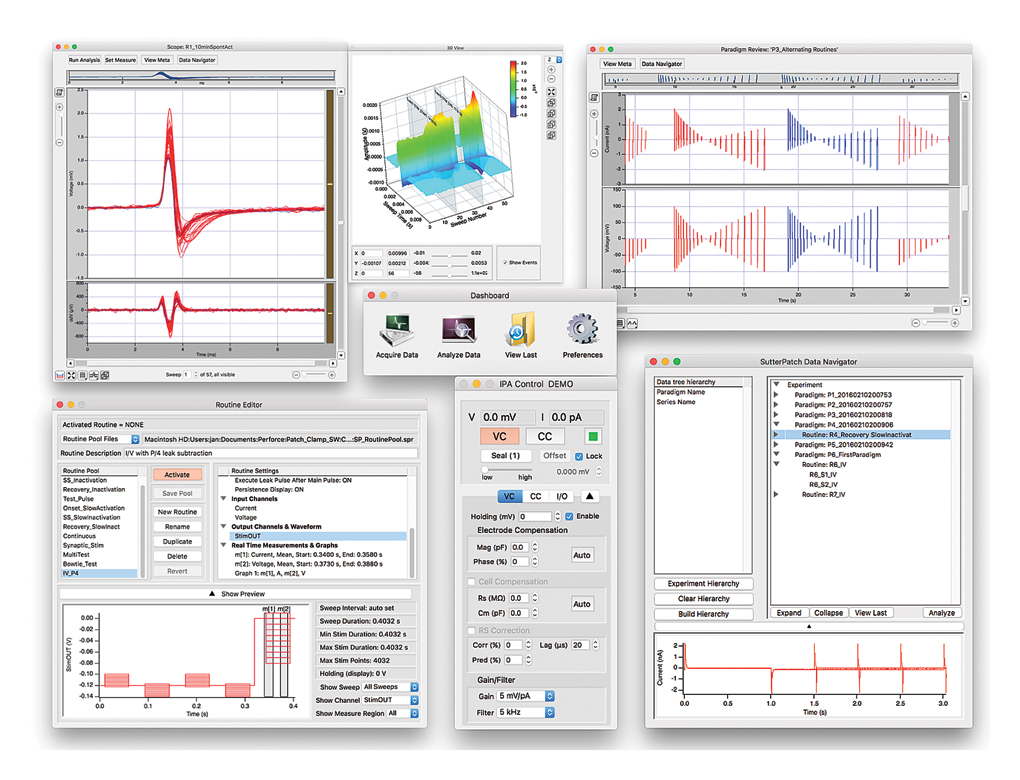
Screenshot of SutterPatch Software
TECHNICAL SPECIFICATIONS
Dimensions
dPatch: 19 in x 11 in x 3.5 in | 48.2 cm x 28 cm x 9 cm
dPatch Preamplifier: 7.6 in x 3.5 in x 1.2 in | 19.5 cm x 9 cm x 3 cm
dPatch Headstage: 3.7 in x 1.1 in x 0.66 in | 9.5 cm x 2.9 cm x 1.7 cm
Weight
dPatch: 15 lbs | 6.8 kg
Electrical
110/240 Volts
50/60 Hertz power line
*Patent No. US 10,393,727 B2
SYSTEM REQUIREMENTS
Minimum Configuration:
- Windows 10 (64-bit), or MacOS: 10.11, El Capitan or later
- Processor: Dual-core i5
- Memory: 8 GB
- Solid-state drive (SSD): 500 GB or greater
- Display Resolution: 1024 x 768 (XGA)
- 1 available USB 3.0 SuperSpeed port (on the main board, not a PCIx card or similar)
Recommended Configuration for Bandwidths of >50 kHz:
- Windows 10 (64-bit), or MacOS: 10.11, El Capitan or later
- Processor: Dual-core i5
- Memory: 16 GB
- Solid-state drive (SSD): 500 GB or greater
- Display resolution 1920 x 1080 (Full HD)
- 1 available USB 3.0 SuperSpeed port (on the main board, not a PCIx card or similar)
SUTTERPATCH® Data Acquisition Management System and Analysis Software: Included with all Sutter Instrument Amplifier Systems
Notes:
USB 3.0 ports are compatible with USB 2.0 High Speed specifications.
Slower USB 2.0 ‘full-speed’ ports, which are sometimes found on older Windows PCs or USB add-in cards, are not supported.
To check for High Speed USB 2.0 or USB 3.0 on a PC computer running Windows, look in the Control Panel > Device Manager > Universal Serial Bus controllers section for “Enhanced” host controllers. As this does not provide any mapping information to the computer’s physical ports, and there can be a mix of USB port versions, you should check individual USB ports for USB 2.0/3.0 High Speed operational performance. As a visual indicator, USB 3.0 ports are often color coded blue.
USB hubs are not supported. USB add-in cards, even if they formally meet High Speed or Super Speed specifications, are not recommended. They are often architecturally configured as USB hubs and may lead to intermittent transfer errors that are hard to troubleshoot.
Operating systems installed within virtualization software platforms such as VMware and Parallels are not supported.
Last Updated on October 21, 2024
IPA/ Double IPA
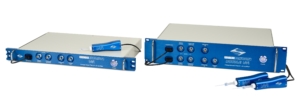
Sutter Instrument introduces the IPA® family of Integrated Patch Amplifiers, which enables efficient, low-noise whole-cell recordings. The IPA systems, available in either a single headstage (IPA) or dual headstage (DOUBLE IPA) version, combine state-of-the-art amplifier technology with fully integrated D/A and A/D conversion and a high speed USB interface. Acquisition, data management, and streamlined analysis are performed using the bundled SutterPatch® Data Acquisition and Analysis Software, built on the foundation of Igor Pro (WaveMetrics, Inc.).
External Inputs & Outputs
External signals, such as environmental parameters or stimulus information, can be recorded using 4 auxiliary analog input channels. The IPA systems also support the control of peripheral hardware, such as wavelength or solution switchers, with 2 analog and 8 digital (TTL) output channels. As an alternative to the standard breakout cable, an optional Patch Panel provides a tidy way of connecting auxiliary signals on the front of your rack.
SutterPatch Software
The IPA system, in combination with SutterPatch software, has been engineered to automatically capture and store all amplifier settings, stimulus information and external experiment parameters and associate them in time with the raw data traces. This includes all amplifier and acquisition settings, as well as timing and progress of the experiment. Fully integrated computer control of the amplifier stages means that the acquisition software is aware of the internal state of the amplifier and digitizer at all times and can track any changes that may occur. This is independent of whether a change is triggered automatically or initiated by the user.
Tracking of Other External Data
In addition to status changes in connected hardware that are automatically tracked, the experimenter can manually trigger tags to document events like stimulus application in instruments not connected to the IPA system.
Information about environmental parameters and a more detailed specification of sample properties can be recorded and stored with the raw data. A total of over 600 metadata attributes are supported. Examples include: animal species, strain, genotype, date/time when a cell sample was prepared, recording solutions, pipette resistance, hardware properties, and detailed information about stimuli applied.
Data Visualization and Analysis
SutterPatch software has been designed to simplify the navigation and analysis of complex datasets. The scope window supports multiple view modes in both two-dimensional and an innovative three-dimensional display. The 3D view is particularly useful during assay development. Built on top of the latest version of the proven Igor Pro platform, the SutterPatch program combines native Igor Pro functionality with a wealth of features that are tailored to electrophysiology applications. Both the newcomer and experienced user of patch clamp programs will feel comfortable using SutterPatch software.
Application modules provide focused functionality for particular applications.
Currently available:
- Event Detection Module: A deconvolution algorithm that excels at detecting miniature synaptic events even on a noisy background
- Action Potential Analysis Module: Phase plane plot, timing and waveform statistics
- Camera Module: An easy way to document the identity and condition of the recorded cell
The IPA and Double IPA Integrated Patch Clamp Amplifiers are computer-controlled single- or dual-headstage amplifiers optimized for whole-cell recording applications.
COMMON APPLICATIONS
- Tissue slice recordings
- Cultured-cell experiments
- Cell line studies from adherent or dispersed cells
- In-vivo patch clamp
- Network studies
- Optogenetics
FEATURES
- NEW: Combination of any two IPA or Double IPA devices enables up to four headstage channels for as many as 16 signals
- Fully integrated patch clamp amplifier and data acquisition system ensures quick and easy setup
- Optimized for whole-cell patch clamp recordings in tissue slices, adherent or dissociated cells
- Full computer control provides automated compensation of electrode and whole cell capacitance
- Voltage and current clamp capability for complete characterization of cells’ electrical activity
- Bundled SutterPatch software excels in comprehensive data management, intuitive navigation and streamlined data analysis
- Line frequency reduction in SutterPatch
ACCESSORIES
Optional IPA Patch Panel
The IPA and Double IPA Amplifiers come standard with an “octopus” breakout cable for auxiliary inputs and outputs, and digital outputs. The optional IPA Patch Panel, machined from ½” thick billet aluminum stock like the IPA faceplate, brings the auxiliary I/O connections to the front of the rack in a tidy 2U rack mount panel with BNC connectors. The IPA Patch Panel includes a 2.5 ft (76 cm) connector cable and replaces the standard cable that ships with the IPA system.

Ground Point
The Ground Point GP-17 provides reliable, low resistance connections for star ground connections, the proven method to avoid ground loops in any electrophysiology setup. Accepts 9 banana plugs + 8 bare wires up to 10 gauge or banana plugs. The baseplate mounts directly on standard or metric air table tops with the included ¼-20 and M6 screws. Made of solid, machined brass with plated banana/clamp connectors.

Amplifier
- Voltage clamp and true current clamp modes with smart switching between modes to avoid current artifacts
- Open-Circuit (RMS) noise of 1.4 pA in a 0.1-10 kHz bandwidth
- 500 MΩ headstage feedback resistor provides a max. range of ±20 nA
- Fast pipette capacitance compensation and whole-cell compensation
- Pipette capacitance compensation up to 25 pF
- Whole-cell compensation: Cm from 1-100 pF ; Rs from 1-100 MΩ
- Onboard automatic compensation routines
- Series resistance prediction and correction (0-100 MΩ)
- Four-pole Bessel low-pass filter (cutoff = 0.5 – 20 kHz)
- Output gain: 0.5-25 mV/pA (voltage clamp); 10-500 mV/mV (current clamp)
- Holding potential ±1000 mV
- Current clamp bridge compensation and capacitance neutralization
- Slow holding potential tracking compensates for drift during current clamp recordings
Data Acquisition
- Embedded data acquisition system eliminates the need for an external data acquisition board and facilitates setup
- Single high-speed USB connection controls data acquisition and amplifier
- Up to 6 or 8 input channels (0.1 – 50 kHz sampling rate per channel)
- Up to 400 kHz aggregate sampling rate
- Multi-amplifier mode: A combination of any two IPA or Double IPA Amplifiers can be connected, providing up to 16 input channels
- Complex command waveforms
- Auxiliary input / output for control of other instrumentation
- 4 analog input channels (±10 V)
- 2 analog output channels (±10 V)
- 8 digital output channels (TTL)
- Data acquisition can be initiated by an onboard microsecond clock or external (TTL) trigger
SutterPatch® Software
- Built on the foundation of Igor Pro (WaveMetrics, Inc.)
- Paradigms and Routines provide complete experimental control
- Waveform Editor for easy creation of even the most complex stimulus patterns or user-defined templates
- Associated metadata stores all relevant information regarding your experiment
- Comprehensive data analysis routines and publication quality graphics
- Runs on Windows 10 or later (64-bit) or Mac OS X 10.11 (El Capitan) or later
 Screenshot of SutterPatch Software
Screenshot of SutterPatch Software
TECHNICAL SPECIFICATIONS
Dimensions
IPA®: 18.8 in x 11.8 in x 1.8 in | 48 cm x 30 cm x 4.5 cm
DOUBLE IPA®: 18.8 in x 11.8 in x 3.5 in | 48 cm x 30 cm x 9 cm
IPA Headstage: 3.9 in x 1.4 in x 0.75 in | 10 cm x 3.5 cm x 1.9 cm
Patch Panel: 18.8 in x 2 in x 3.5 in | 48 cm x 5 cm x 9 cm
Weight
IPA: 9 lbs | 4 kg
DOUBLE IPA: 8.1 lbs | 3.7 kg
Patch Panel: 3.5 lbs | 1.6 kg
Electrical
110/240 Volts
50/60 Hertz power line
SYSTEM REQUIREMENTS
Minimum Configuration:
- Operating System: Windows 10 (64-bit) or later, or MacOS: 10.11, El Capitan or later
- Processor: Dual-core i5
- Memory: 3 GB
- Hard Disk: 500 GB or greater
- Display Resolution: 1024 x 768 (XGA)
- 1 available USB 2.0 High Speed port
Recommended Configuration:
- Windows 10 (64-bit) or later, or MacOS: 10.11, El Capitan or later
- Processor: Dual-core i5
- Memory: 8 GB
- Solid-state drive (SSD), 500 GB or greater
- Display Resolution: 1920 x 1080 (FULL HD)
- 1 available USB 2.0 High Speed port
Notes:
USB 3.0 ports are compatible with USB 2.0 High Speed specifications.
Slower USB 2.0 ‘full-speed’ ports, which are sometimes found on older Windows PCs or USB add-in cards, are not supported.
To check for High Speed USB 2.0 or USB 3.0 on a PC computer running Windows, look in the Control Panel > Device Manager > Universal Serial Bus controllers section for “Enhanced” host controllers. As this does not provide any mapping information to the computer’s physical ports, and there can be a mix of USB port versions, you should check individual USB ports for USB 2.0/3.0 High Speed operational performance. As a visual indicator, USB 3.0 ports are often color coded blue.
USB hubs are not supported. USB add-in cards, even if they formally meet High Speed or Super Speed specifications, are not recommended. They are often architecturally configured as USB hubs and may lead to intermittent transfer errors that are hard to troubleshoot.
Operating systems installed within virtualization software platforms such as VMware and Parallels are not supported.
Last Updated on October 21, 2024
Dendrite

The conventional architecture of an electrophysiology system follows a three-tier structure consisting of an amplifier, a computer interface, and data acquisition software. Sutter Instrument’s patch clamp amplifier systems, the IPA® Family and the dPatch® Amplifier systems combine these three tiers into convenient, fully integrated packages that include the increasingly popular SutterPatch® Data Acquisition, Management and Analysis Software. The Dendrite™ system meets the needs of customers who want to combine an existing amplifier with the functionality of SutterPatch software.
Featuring eight analog input signals, four analog output lines and eight digital outputs, at a sampling rate of up to 50kHz, the Dendrite system covers the majority of electrophysiology applications. Independent 16-bit A-D and D-A converters constitute state-of-the-art technology that avoids crosstalk and provides adequate resolution for virtually all use case scenarios. Trigger in- and output lines enable coordination with other equipment.
Connection to the computer is conveniently established through a High Speed USB 2.0 connection and the installation of drivers and SutterPatch software is typically completed within minutes. The Dendrite system accepts input from the majority of patch clamp and other electrophysiology amplifiers that comply with the common standard of +/-10 V signal range. It also controls amplifiers and peripherals that accept analog or digital input according to common standards.
SUTTERPATCH SOFTWARE
The Dendrite and SutterPatch software system has been engineered to let the user add information about instrument settings, stimulus application and external experiment parameters and associate them in time with the raw data traces. This includes all acquisition settings, as well as timing and progress of the experiment. In addition, the experimenter can manually trigger tags to document events like stimulus application in instruments not connected to the Dendrite system.
Information about environmental parameters and a more detailed specification of sample properties can be recorded and stored with the raw data. A total of over 600 metadata attributes are supported. Examples include: animal species, genotype, date/time when a cell sample was prepared, recording solutions, pipette resistance, hardware properties, and detailed information about stimuli applied.
DATA VISUALIZATION AND ANALYSIS
SutterPatch software has been designed to simplify the navigation and analysis of complex datasets. The scope window supports multiple view modes in both two-dimensional and an innovative three-dimensional display. The 3D view is particularly useful during assay development. Built on top of the latest version of the proven Igor Pro platform, SutterPatch combines native Igor Pro functionality with a wealth of features that are tailored to electrophysiology applications. Both the newcomer and the experienced user of patch clamp programs will feel comfortable using SutterPatch software.


Data Acquisition
- High-speed USB connection controls data acquisition
- Up to 8 analog input channels (±10 V; 0.1–50 kHz sampling rate per channel)
- 4 analog output channels (±10 V)
- 8 digital output channels (TTL)
- Up to 400 kHz aggregate sampling rate
- Complex command waveforms
- Data acquisition can be initiated by an onboard microsecond clock or external (TTL) trigger
SutterPatch® Software
- Built on the foundation of Igor Pro (WaveMetrics, Inc.)
- Paradigms and Routines provide complete experimental control
- Waveform Editor for easy creation of even the most complex stimulus patterns or user-defined templates
- Associated metadata stores all relevant information regarding your experiment
- Comprehensive data analysis routines and publication-quality graphics
- Rapid-response online line-frequency reduction
- Runs on Windows 10 or later (64-bit), or Macintosh OS X 10.11 (El Capitan)
Application modules provide focused functionality for particular applications.
- Event Detection Module: A deconvolution algorithm that excels at detecting miniature synaptic events even on a noisy background
- Action Potential Analysis Module: Phase plane plot, timing and waveform statistics
- Camera Module: An easy way to document the identity and condition of the recorded cell
- Single-channel Analysis Module: All-points histogram, idealized trace, duration and amplitude distribution and scatter plot

Screenshot of SutterPatch Software
TECHNICAL SPECIFICATIONS
Dimensions
18.8 in x 11.8 in x 1.8 in | 48 cm x 30 cm x 4.5 cm
Weight
5 lbs | 2.3 kg
Electrical
110/240 Volts
50/60 Hertz power line
SYSTEM REQUIREMENTS
Minimum Configuration:
- Windows 10 (64-bit), or MacOS: 10.11, El Capitan or later
- Processor: Dual-core i5
- Memory: 3 GB
- Hard Disk: 500 GB or greater
- Display Resolution: 1024 x 768 (XGA)
- 1 available USB 2.0 High Speed port
Recommended Configuration:
- Windows 10 (64-bit), or MacOS: 10.11, El Capitan or later
- Processor: Dual-core i5
- Memory: 8 GB
- Solid-state drive (SSD): 500 GB or greater
- Display resolution 1920 x 1080 (Full HD)
- 1 available USB 2.0 High Speed port
SUTTERPATCH® Data Acquisition Management System and Analysis Software: Included with all Sutter Instrument Amplifier Systems
Notes:
USB 3.0 ports are compatible with USB 2.0 High Speed specifications.
Slower USB 2.0 ‘full-speed’ ports, which are sometimes found on older Windows PCs or USB add-in cards, are not supported.
To check for High Speed USB 2.0 or USB 3.0 on a PC computer running Windows, look in the Control Panel > Device Manager > Universal Serial Bus controllers section for “Enhanced” host controllers. As this does not provide any mapping information to the computer’s physical ports, and there can be a mix of USB port versions, you should check individual USB ports for USB 2.0/3.0 High Speed operational performance. As a visual indicator, USB 3.0 ports are often color coded blue.
USB hubs are not supported. USB add-in cards, even if they formally meet High Speed or Super Speed specifications, are not recommended. They are often architecturally configured as USB hubs and may lead to intermittent transfer errors that are hard to troubleshoot.
Operating systems installed within virtualization software platforms such as VMware and Parallels are not supported.
Last Updated on October 21, 2024
SutterPatch
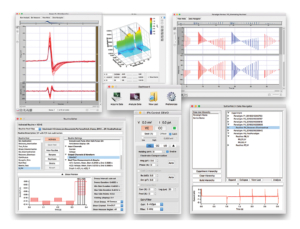
SutterPatch® software is a full-featured electrophysiology data acquisition, management and analysis application for Windows or Mac OS computers. SutterPatch comes bundled with all Sutter Instrument Patch Clamp Amplifier Systems. The software controls data acquisition, provides real-time measurements to aid decision making during the experiment, keeps track of all amplifier parameters, records the experimental progress and stores a set of up to 600 metadata parameters. Built within the latest version of Igor Pro by WaveMetrics, Inc., SutterPatch provides immediate access to Igor’s powerful scientific and engineering analysis tools.
Version 2 of SutterPatch software adds support for the new dPatch® Digital Patch Amplifier System as well as a multitude of new features and user interface improvements that also apply to the IPA Family of Amplifier Systems. The Membrane Test and Free Run have been upgraded. New triple slider and 2D-matrix controls facilitate compensation adjustments in the Amplifier Control Panel.
Particular emphasis was put into intuitive navigation through large data sets. Controls that are familiar from electrophysiology software or applications in other fields, as well as entirely new approaches make finding a particular section of an experiment very easy.
The structured architecture of the data files was designed to retain the context of every sample within an experiment. With little effort at the beginning of an experiment, a plethora of metadata parameters are recorded – automatically where possible, configured by the user where desired. Each parameter can be reviewed before a Paradigm or Routine is executed.
SutterPatch software comes with a collection of sample Paradigms and Routines that facilitate the configuring of commonly executed experimental scenarios.
SutterPatch provides real-time analysis capability that automatically creates graphs like I-V curves or a time course plot while the experiment is in progress. Up to 8 analysis graphs can be shown, each derived from 16 possible measurements from the input signals. Analyses include mean, slope, rise time, frequency of threshold crossing, etc. This facilitates making decisions about the further course of an experiment.
In addition to real-time analysis, SutterPatch supports further processing after the experiment for the most sophisticated analysis procedures. SutterPatch adds application-specific capabilities on top of the expansive analysis feature set that is native to Igor Pro. Equations and Variables facilitate the use of more complex algorithms in both Routines and Paradigms.
S U T T E R P A T C H F E A T U R E S
- NEW: Support for for all Sutter Instrument Amplifier Systems, including the new dPatch® Digital Patch Clamp Recording System
- Scope Window provides intuitive, efficient navigation through your data
- Zoom control buttons and sliders
- Drag along axis to zoom in
- Mouse wheel zoom
- Marquee zoom
- Scroll bars
- Continuous and snapshot autoscale
- Sweep, time course and concatenated display
- Novel 3D display
- Unique Overview Navigator for panormaic examination of and convenient movement within a data section
- Paradigm Review window gives quick access to individual Routine Data
- Membrane Test keeps track of cell health and other quality control parameters
- Waveform types include double pulses, sine and triangle trains and instantaneous RMS noise measurement
- Simultaneous display of up to two amplifier or auxiliary input signals and a command waveform
- Test pulse parameters fully configurable
- Pulse averaging
- Audio monitor
- Routines control data acquisition with or without application of command waveforms
- Sample Routine Pool with pre-configured Paradigms for many common applications
- Hard-wired signals from Sutter Instrument hardware and auxiliary input signals are recorded
- The command signal as applied to the cell is monitored and recorded
- Analog and digital output signals control periphery and third-party information
- Up to 50 Segments per Sweep for utmost flexibility in shaping the most complex command waveforms
- Preconfigured Segment shapes such as Sine, Square, and Chirp for easy waveform design
- Waveform Template enables “playback” of a recorded signal to a cell or applying a mathmatical expression as a waveform
- Measurements provide the basis for real-time analysis and enable decision making in the course of the experiment
- Paradigms enable process automation and eliminate operator bias
- Sample Paradigm Pool with pre-configured Paradigms for many common applications
- Configure the amplifier to reproducible standard settings
- Acquisition of Routine sequences enables pre-planned experimentation and minimizes operator bias
- Flow control for interactive or automated decision-making during the experiment
- Chaining Paradigms provides added flexibility
- Automatic creation of Layouts for standardized documentation
- The Solution Editor lets you keep track of solutions and compounds and supports direct control of a solution switcher
- Initial conditions and all solution changes are automatically written to the MetaData
- Analog or digital outputs control all common solution switchers
- The Data Navigator displays the entire experiment in a tree structure
- Preview of the first acquired signal
- Quick access to Paradigm Review, Reanalysis Scope, Metadata and Routine information
- Real-time and off-line analyses, including mini / synaptic event detection and action potential characterization
- Measurements configured as part of Routines create real-time graphs
- Virtual signals provide the user with information derived from physical input signals, mathematical equations, signal modification, or any combination thereof. High- and low-pass filters, lock-in amplifier capability, and subtraction of a reference sweep are new in version 2
- Paradigms can access measurements for further real-time analysis
- Equations and variables provide utmost flexibility
- Event detection using a performant, deconvolution-based algorithm
- Easily exports data to Microsoft Excel and other spreadsheet programs for compatibility with existing analysis procedures
- A wealth of native Igor Pro analysis
Last Updated on October 21, 2024
Ordering
For ordering information, please contact ALA Scientific Sales team.
Last Updated on October 21, 2024
